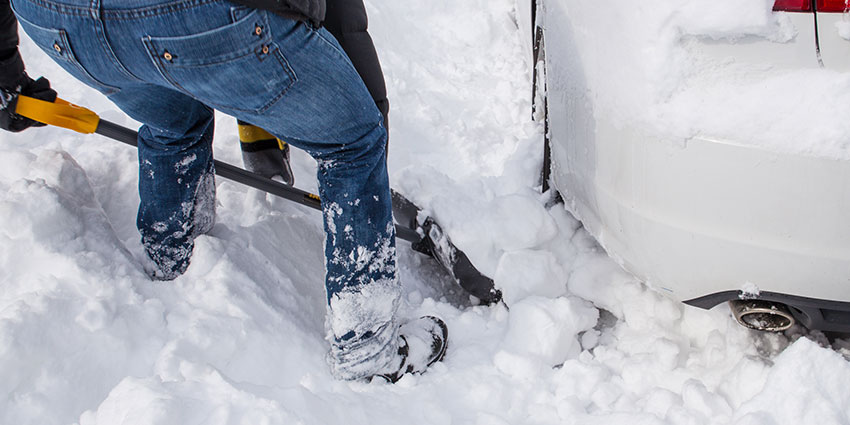Winter Tips for Your Home and Car

Here are even more tips and tricks to help you maneuver around the potential hazards caused by the ice and snow of winter.
Remove Icicles
Varying winter temperatures can cause icicles to form along your home’s gutters. Although visually beautiful, icicles are extremely dangerous and pose a threat to anyone standing beneath them. Safely remove them with a broom or rake, making sure you stand back far enough to give the icicles clearance to fall without hitting you.
Outsmart Ice Dams
Ice dams – ice pockets that form beneath the shingles of your roof and cause leaks – are caused by several factors, and insufficient insulation is a preventable one. Adding extra insulation keeps heat inside your home, preventing it from melting the ice and snow on your roof, which can refreeze under your shingles when the temperature drops.
Keep Airways and Vents Clear
Your home’s heating system needs the airways that lead out to be clear in order to function properly, so make sure that snow and ice build-up aren’t blocking the ventilation. In addition to helping you save money on your heating bill, this tip helps improve air quality and circulation, and assists in preventing carbon monoxide poisoning. The same is true for your car: make sure snow and ice are not blocking your exhaust, as this can result in toxic fumes leeching into your car instead of being safely released outside.
Shovel and Salt Your Driveway and Walkways
It doesn’t take long for surfaces to become icy and dangerous. To prevent slips and falls, it’s a good idea to shovel your driveway and any walkways as soon as possible. Laying down rock salt before a snowstorm also helps prevent ice from forming on surfaces, which can create a slipping hazard for you, your family, or any guests that may be visiting.
Dig Your Car Out of the Snow ASAP
If you don’t park your car in a covered garage, it’s always a good idea to shovel it out of the snow as soon as possible, but that’s especially true after a heavy snowfall. If temperatures drop rapidly after a snowstorm, the snow can freeze on your car, making it difficult to remove and more likely that you’ll cause damage to your car’s exterior in the process. In the case of exceptionally heavy snowfalls, the prolonged weight of the snow can even cause your windshield and rear window to collapse!
The winter months have the potential to cause damage to both your home and car, but following the tips listed above saves you major headaches and helps you prevent bigger issues later on.
This information is provided for your convenience and is not intended as insurance advice. The views, opinions, and advice expressed in this article do not represent those of Homesite Group Incorporated. Please consult your insurance carrier or agent for information regarding your policy or coverages.
